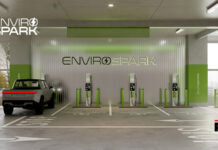Internal combustion engines often face limitations in terms of power output and efficiency. This can be a significant challenge for industries relying on engines to meet their performance demands. Inefficient fuel combustion and inadequate air supply are key factors contributing to this problem. A turbocompressor, also known as a turbocharger, emerges as a groundbreaking solution. By harnessing the power of exhaust gases, these compressors maximize engine efficiency by increasing the amount of air entering the combustion chamber. This innovative technology has revolutionized the automotive, industrial, and aerospace sectors, providing significant gains in power output, fuel economy, and emission reduction.
Let’s understand everything about it.
What is a Turbocompressor?
A turbocompressor, also known as a turbocharger, is a device that enhances the performance of internal combustion engines by increasing the amount of air entering the combustion chamber. It consists of an exhaust gas turbine wheel and a compressor wheel connected by a solid shaft. The exhaust gases from the engine drive the turbine, which, in turn, powers the compressor. This compressed air is then forced into the engine, resulting in improved power output and efficiency.
According to Extrapolate, the global turbocompressor market is projected to reach USD 12.34 billion by 2030. These play a crucial role in various industries, including automotive, industrial, and aerospace. They enable engines to burn fuel more efficiently, generating higher power without the need for increased engine size. This technology has proven to be effective in enhancing engine performance, improving fuel economy, and reducing emissions.
What is its Working Principle?
The working principle of a turbocharger revolves around utilizing a turbine-driven impeller to compress gases or air. Here’s how it typically works:
- Intake: These compressors draw in the gas or air through an intake port.
- Compression: As the gas or air enters the compressor, it encounters a rapidly spinning impeller. The impeller imparts kinetic energy to the gas or air, causing it to move at high velocity.
- Pressure Increase: The high-speed gas or air then enters a diffuser or volute, where its kinetic energy is converted into pressure energy. This process results in a significant increase in pressure.
- Discharge: Finally, the compressed gas or air is discharged from the turbocharger at a higher pressure than the intake, ready for use in various industrial processes.
Overall, these compressor achieves compression through the mechanical energy provided by the turbine-driven impeller, resulting in the desired increase in pressure for the gas or air.
Decoding the Key Components
The key components of a turbocharger include the following:
- Impeller: This rotating component accelerates the gas or air, imparting kinetic energy to it.
- Diffuser or Volute: This component converts the kinetic energy of the high-speed gas or air into pressure energy, resulting in compression.
- Turbine: The turbine is typically powered by an external power source, such as an electric motor or a gas turbine engine. It drives the impeller through a shaft, providing the necessary energy for compression.
- Shaft and Bearings: The shaft connects the impeller and the turbine, transferring the rotational energy from the turbine to the impeller. Bearings support the shaft, allowing it to rotate smoothly.
What are the Applications and Benefits of Turbocompressors?
Turbochargers have garnered widespread utilization across diverse industries owing to their myriad advantages. In the automotive sector, turbochargers have become indispensable components of high-performance engines, offering heightened power output while simultaneously curbing fuel consumption. Industrial leaders within the automotive realm have reported significant enhancements, with engine power witnessing up to a 20% increase upon integrating turbochargers. Furthermore, turbocharger integration has substantially diminished the carbon footprint of vehicles by facilitating downsized engines that maintain performance levels.
Within the aerospace industry, turbochargers assume a pivotal role in augmenting the power output of aircraft engines, enabling them to operate at elevated altitudes and attain swifter velocities. This translates to reduced travel durations and heightened fuel efficiency, thereby fostering sustainability in air travel.
In marine applications, turbochargers are deployed to amplify the power output of ship engines, ensuring efficient performance while concurrently diminishing emissions. Similarly, power generation plants have embraced turbocharger technology to optimize energy production, thereby enabling them to generate more electricity with the same fuel input.
Environmental Impact and Energy Efficiency of Turbocompressors
Turbocompressors have a significant environmental impact, particularly in terms of energy efficiency and emissions reduction. These devices play a crucial role in improving the energy efficiency of various industrial processes by utilizing exhaust gases to compress incoming air.
Energy Efficiency and Emissions Reduction
Utilization of Exhaust Gases: Turbochargers use exhaust gases to compress incoming air, resulting in reduced fuel consumption and lower greenhouse gas emissions.
Optimized Combustion Process: Turbochargers optimize the combustion process, leading to a higher air-to-fuel ratio and reduced release of pollutants like carbon monoxide, nitrogen oxides, and particulate matter.
Innovations in Technology: Innovations in turbocharger technology, such as electric turbocharging, waste energy recovery, and advanced control systems, further enhance energy efficiency and minimize environmental impact.
What are the Challenges Faced by Turbochargers
Continuous innovation and technological advancements have been instrumental in addressing the various challenges encountered by turbocompressors. Technical hurdles, such as achieving the desired flow coefficient and inlet relative Mach number in propane compressors, have been mitigated through advancements in compressor technology. Moreover, energy efficiency and environmental concerns have been tackled by the adoption of electric motor-driven centrifugal air turbochargers, which ensure oil-free air, reduce energy consumption, and minimize environmental impact. Reliability and durability have also seen improvements through substantial investments in research and development, resulting in enhanced overall turbocharger performance. Additionally, innovative sealing systems have been developed to reduce oil leakage, further optimizing operational efficiency and extending turbocharger lifespan. Application-specific challenges have been successfully addressed by understanding unique requirements and leveraging expertise in turbocharger technology. These collective advancements contribute to overcoming challenges in turbocharger technology, ensuring superior performance, reliability, and sustainability across various industrial applications.
Final Takeaway
Turbocompressors have revolutionized the performance of internal combustion engines across various industries. By efficiently increasing the amount of air entering the combustion chamber, these devices have proven to be a powerful solution for enhancing power output, improving fuel economy, and reducing emissions. With their ability to maximize engine efficiency, turbochargers have become an indispensable component in automotive, industrial, and aerospace applications. As industries strive for greater productivity and sustainability, turbochargers continue to play a pivotal role in driving innovation and meeting the demands of a dynamic and evolving world.
Browse More Post:-
A New Era in Surgery: Harnessing the Potential of Hybrid Operating Rooms
Magnesium Carbonate: Is This Mineral the Key to Better Health?
Acesulfame K: Redefining Sweetness in Today’s Low-Sugar Lifestyles
Can Your Blood Pressure Monitoring Devices Predict Your Well-being?




